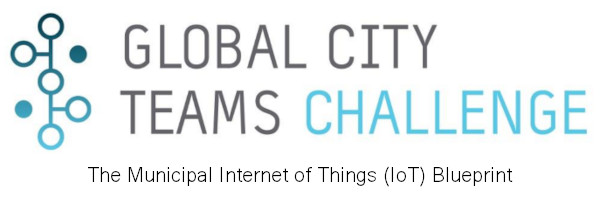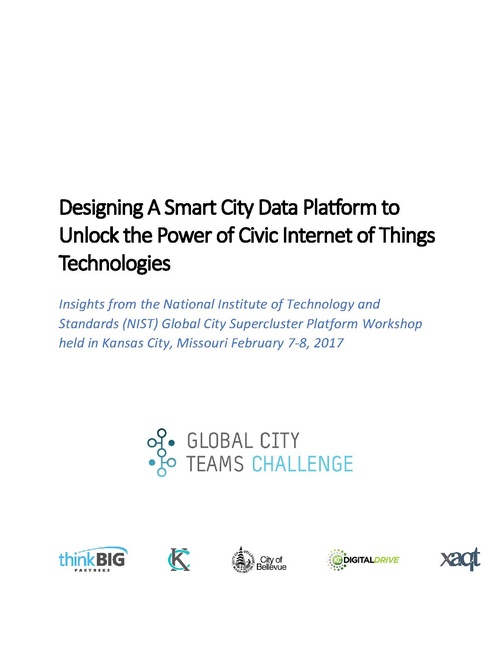Designing A Smart City Data Platform to Unlock the Power of Civic Internet of Things
| Report | |
|---|---|
| Image | 
|
| Published | 2017-02-07 |
| Point(s) of Contact | Bob Bennett |
| Organization(s) | Global City Teams Challenge NIST |
| Where | Kansas City MO |

| |
This white paper reflects the collective wisdom of the one hundred eighteen people who gathered in Kansas City, Missouri in early February 2017 to figure out how to transform cities into data-driven organizations focused on providing 21st Century Services to 21st Century Citizens. Our goal was – and remains – to identify the 85-120 things that all cities measure in a standardized, replicable form so that we can better partner with industry and academic institutions and solve issues. We didn’t get there in two days. What we did accomplish was an identification of several considerations that cities need to account for when building the data driven culture. We also figured out that many of the challenges that we face in Kansas City are shared in large municipalities like Chicago and New York City and smaller cities like Akron, OH and Branson, MO.
In 2016, the United Nations reported that an estimated 54.5% of the world’s population lived in urban settlements. By 2030, urban areas are projected to swell to 60% and one in every three people will live in a city. With more than three million people moving into urban areas each week, cities are faced with an unprecedented challenge. How do you deliver essential services to your citizens in the face of already stressed aging infrastructure, shrinking budgets and a myriad of challenges that create complexity never envisioned by any civil engineer prior to the 21st century based on this mass influx of people? The pace of change is daunting and cities who do not act to address this seismic migration surge will likely face dire consequences.